Tag: Training Tips
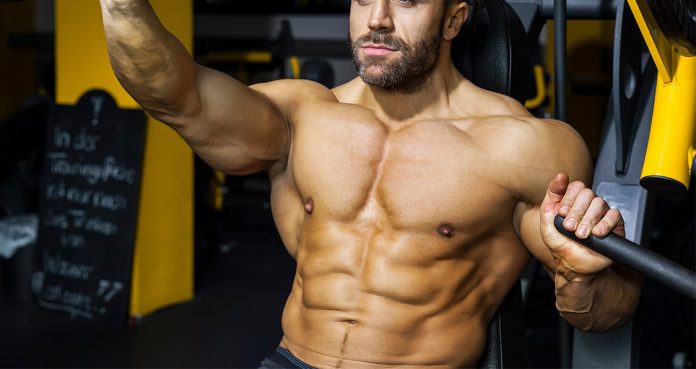
How To Get A Better Chest Day Pump
Tips for a Better Chest Day Pump
Almost all men who workout desire a wider chest. A broader and fuller chest can make you stand out of the crowd other than the fact that it adds a dash of masculinity to your personality.
A muscle pump is critical to the development of your muscles. The pump is when blood rushes to your working muscles and carries lactic acid and nutrients along with it. Developing your chest can be hard if you’re unable to recruit all your pectoral muscles during your workouts.
Pre-Exhaust Your Pecs
Most people start their chest workouts with the good old barbell bench press. While there is no denying the fact the bench press is a great exercise, performing an isolation exercise like the cable flyes can result in a better chest pump.
Performing the cable flyes at the beginning of your workouts will exhaust your pecs and you won’t have to lift as big weights as compared to what you would’ve to lift if you started off with the bench press.
Use a Pre-Workout Supplement
Pre-workout supplements can be incredibly effective in helping you get a pec pump during your workout. Pre-workout supplements have ingredients like nitric oxide, beta alanine, caffeine, beetroot extract, etc. which can help in achieving and amplifying muscles pumps.
Not only will the pre-workout supplement help you get a muscle-ripping pump but will also improve the quality of your workout by delaying fatigue, improving your focus and mind-muscle connection.
Add Isolation Exercises To The Mix
Compound (multi-joint) exercises like the bench or dumbbell presses are great at building muscle mass and strength. On the other hand, isolation (single-joint) exercises like pec deck fly, cables, chest machines are effective in getting you a better muscle pump and developing muscle conditioning.
Make sure you don’t rely too heavily on the isolation exercises as they might feel easier and quicker to perform. Maintain the right balance between compound and isolation movements to get the best of both worlds.
Increase Intensity and Change Rep Tempos
If you’ve been performing the 5 exercises of 3 set and 12 reps training routine and are not getting a muscle pump anymore, it’s time to spice things up. Pump your workout intensity by performing higher reps (15-20) to take your workouts to the next level.
Changing your rep tempos can also help in inducing better and nastier muscle pumps. An example of the rep tempos could be to slow down the negatives (eccentric movement) and fasten up the positive (concentric movement).
Use Advanced Training Techniques
Hitting a plateau can be one of the biggest factors for not getting a pump. Using advanced training techniques like the supersets, drop sets, intraset stretching, etc. can be an incredibly effective way of breaking through the overhead glass ceiling.
Try to incorporate at least one advanced training techniques in your workouts for getting a muscle-scorching pump. There are numerous training techniques to keep you entertained while ensuring muscle growth and development.
Which is your favorite chest exercise? Let us know in the comments below. Also, be sure to follow Generation Iron on Facebook and Twitter.
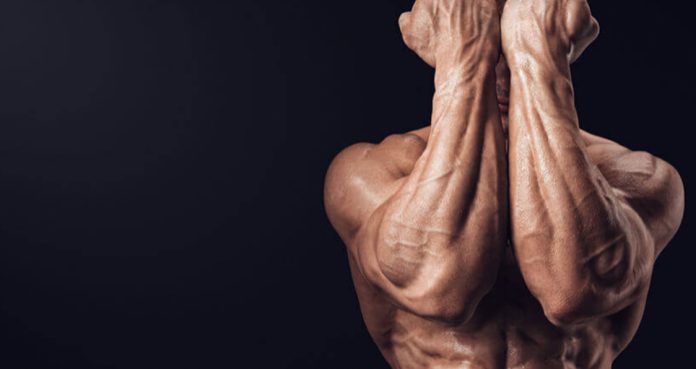
10 Exercises for Thicker Forearms
Exercises You Should Be Doing For Thicker Forearms
Forearms are one of the most overlooked muscle groups and don’t get the same love as the biceps. Forearms and biceps symmetry can add to the aesthetics of your body and can make your arms look bigger.
Bodybuilding is a game of delusions and thicker forearms and smaller joints can visually add significant size to your biceps. Before we dive into forearms training, let’s touch on the forearm anatomy for a minute.
Your forearms consist of two main muscle groups, the flexors, and extensors. Flexors are also responsible for pronation and extensors for supination. Flexors are present inside your forearms and extensors are on the outside of your forearms.
Reverse Grip Dumbbell Curls
The normal bicep dumbbell curls work the biceps, while the reverse grip dumbbell curls primarily work the forearms and the outer heads of the biceps. Holding the dumbbells with a monkey grip (thumbs over the handles) makes the movement more taxing on the forearms.
Barbell Wrist Curls
Barbell wrist curls are an isolation exercise and work the forearm flexors. If you don’t have an access to a wrist curl machine at your gym, you can place your forearms on a flat bench with your wrist hanging off the bench. Lower the barbell until your knuckles are facing the floor and your palms should be facing you at the top of the movement.
Reverse Barbell Wrist Curls
Reverse barbell wrist curls are the opposite of the normal wrist curls and work the forearm extensors. Hold the barbell with an overhand monkey grip to completely exhaust your forearms.
Arm Blaster Reverse Barbell Bicep Curls
The arm blaster can annihilate your forearms. Maintaining a strict form is the hardest thing while performing the reverse barbell curls. Using an arm blaster can eliminate the use of momentum. You can also use Fatgripz to recruit every muscle fiber in your forearms.
Barbell Roll Outs/Grip Crushers
The grip crushers will fill your forearms with lactic acid. Lock out your elbows and grab a barbell in front of your quads. Allow your hand to open and the barbell to roll to your fingertips. Return to the starting position and complete a wrist curl.
Farmer’s Walk
Farmer’s walk might look easy but will demand all you’ve left in the tank. Grab a pair of dumbbells you can hold on to for a couple of minutes. Go for a 40-50 yard walk with the dumbbells and at the end of the distance, stop and continue to hold the weights for as long as possible.
Towel Pull-Up
The harder it is for you to hold on to something, the more will be your forearm recruitment. Performing towel pull-ups can take your forearm gains to the next level. Set up a towel on the pull-ups bar and perform the pull-ups until you can’t hold onto the towel anymore.
Zottman Curls
Zottman curls are an overall arm builder. Unlike the textbook barbell and dumbbell curls, the Zottman curls train your forearms as well. Stand holding a dumbbell in each hand with the dumbbells facing your sides. Curl the weights so your palms are facing you at the top of the movement. Turn your palms to face down, and then lower the weights slowly, as in a reverse curl.
Behind the Back Cable Grip Crushers into Wrist Curls
Cables are a great way to maintain a constant tension on your muscles throughout the exercise. Grab a straight bar with your back facing towards the pulley. Open your hands and allow the bar to roll to your fingertips. Return to the starting position and complete a wrist curl at the top of the movement.
Plate Pinch
The plate pinch is a simple exercise which requires a couple of weight plates but will take your forearm gains to the next level. Start with two 10 pound weight plates and pinch them together with one hand. Just like the farmer’s walk, go for a 40-50 yard walk while pinching the plates together and at the end of the distance, stop and continue to hold the weights for as long as possible.
How often do you train your forearms? Let us know in the comments below. Also, be sure to follow Generation Iron on Facebook, Twitter, and Instagram.
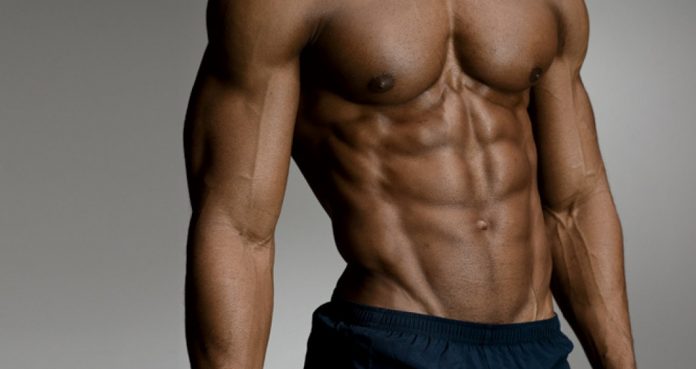
The Most Effective Ab Workout You Can Do at Home
An Ab Workout You Can Do at Your Home
A ripped midsection isn’t easy to get but can make you stand out from the crowd. The good news is, you don’t have to hit a gym in order to train your abs. You can build your abs from the comfort of your home.
Everyone has abs but they are hidden under a layer of fat. Proper diet and training can help in exposing your six-pack. A 15-20 minute ab workout is enough to carve your midriff into a masterpiece.
Lying Leg Raises – 3 Sets 20 Reps
Lying leg raises work your lower abs. Lower abs are the most stubborn fat holding section of your abdominal. If you have an access to a flat bench at your home, you can use it to increase your range of motion.
Lie with your back on the floor, your arms placed on your sides and your legs stretched out. Raise your legs so they’re perpendicular to your upper body. Slowly lower your legs so they’re 2-3 inches away from the ground. Repeat this movement for 20 reps.
Crunches – 3 Reps 30 Reps
We are taking an overall approach to training abs in this workout. Crunches work your upper and middle abs and are one of the most popular abdominal exercises. The high number of reps of this exercise will help in building definition in your midriff.
Lie on an exercise mat with your feet placed flat on the floor. Place your hands behind your head. Some people stretch out their arms and use them to generate momentum which can take off tension from the abs. Lift your upper back off the floor, breathe out and squeeze at the top of the movement. Your lower back should be touching the floor at all times.
Russian Twists – 3 Reps 15 Reps Each Side
Most people overlook training their obliques. Obliques are the fish gill-like muscles present on the sides of your abs. Russian twists are one of the most effective oblique exercises and will help you in building the V-shaped muscle in your lower abs.
Sit on an exercise mat with a slight bend in your knees and feet elevated. Hold a weight (could be a dumbbell or weight plate) in front of your chest. Rotate to your right side, breathe out and squeeze your obliques. Return to the starting position and repeat on the left side.
Reverse Crunches – 3 Sets 20 Reps
Reverse crunches are the opposite of the traditional crunches. In this exercise, you work your lower body as compared to your upper body in the traditional crunches. Reverse crunches work your lower abs.
Lie with your back on the exercise mat, arms on your sides and feet placed flat on the floor. Lift your feet off the floor and bring your knees to your chest. Hold your knees close to your chest for a second before returning to the starting position.
Planks – 3 Sets 1, 1.5, 2 Minutes Each
Planks have earned a name for themselves when it comes to core and ab training. Performing planks can strengthen your core which can help you in performing other exercises better, especially compound movements.
Place your forearms on the ground with your elbows aligned below the shoulders. Your arms should be parallel to your body at about shoulder-width distance. Perform the first set for a minute, the second set for 1.5 minutes and the last set for two minutes. Your abs will be on fire after this workout.
Which is your favorite ab exercise? Let us know in the comments below. Also, be sure to follow Generation Iron on Facebook and Twitter.
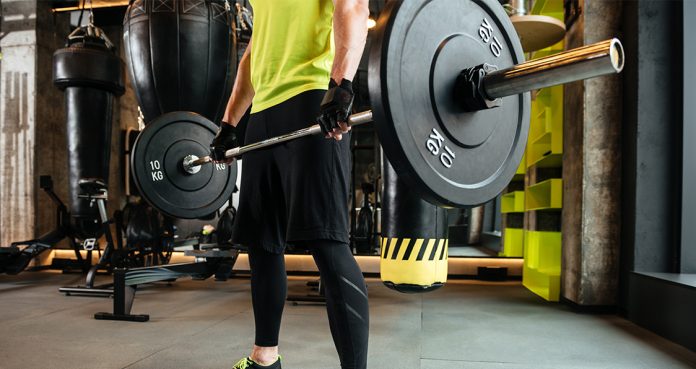
The Best Way To Bring Up Lagging Body Parts
Ways to Bring Up Lagging Body Parts
Only a few people are gifted with perfect genetics. If you’re like most of us mortal humans, chances are you have a lagging body part or two. There is nothing wrong with having weaker muscles groups. You should know how to work on your shortcomings.
Many people when confronted about their lagging muscle groups fall upon blaming their genetics. You don’t have to give up on your lineage just because you have small calves. Read through the article and find your way through the lagging muscles problem.
Change Your Training Splits
One of the most effective ways of building up a weaker muscle group is to train it often. You need to train the lagging muscles more often than you train the other muscles. You can’t expect the weak muscle group to show improvement without switching your training routine.
For instance, if you have a weaker chest as compared to the other muscles and you train all your muscles once a week, you need to start hitting your chest twice a week. Train two muscles in a single session if you have to.
Unilateral Movements
Unilateral exercises include training one side of your body at a time. Training one side at a time helps in better isolating your muscles. It’s easier to establish a mind-muscle connection when you’re training a single muscle.
If you’re performing the unilateral movements correctly, you should have a better pump at the end of your exercises as compared to the normal versions. Make sure you have the right mix of compound and isolation exercises in your unilateral workouts.
Performs Higher Reps on the Weaker Side
Other than having lagging muscle groups, some people have a weaker side. In such a situation, one of the muscles in the group is stronger and more muscular than the other. Some people have a lagging shoulder or a lagging bicep.
You can fix the muscle imbalances to an extent by performing more reps on the weaker side as compared to the stronger side. While performing exercises like the alternating dumbbell curls, perform 10 alternating reps on each side and then drop the dumbbell you’re holding on the stronger side and complete 3-4 more reps with the weaker arm.
Tweak Your Diet
Diet plays a significant role in building muscle mass. While your nutrition needs to be on point at all times, you will have to make a little adjustment on the days you train a lagging muscle group.
While it’s no secret protein is the muscle building macronutrient, carbohydrates are your best friend on your weak muscle training day. Make sure you load up on good carbs right after your workout.
Use Advanced Training Techniques
The stubborn muscles groups demand more than the other muscles. You will have to shock your muscle into growing which is only possible if you introduce something new in every workout.
Use advanced training techniques like drop sets, supersets, intra-set stretching, BFR (blood flow restriction) training, etc. in your workouts. Your lagging muscles should be asking for mercy for not following your command by the end of your workouts.
Do you have a lagging muscle group? Let us know in the comments below. Also, be sure to follow Generation Iron on Facebook and Twitter.
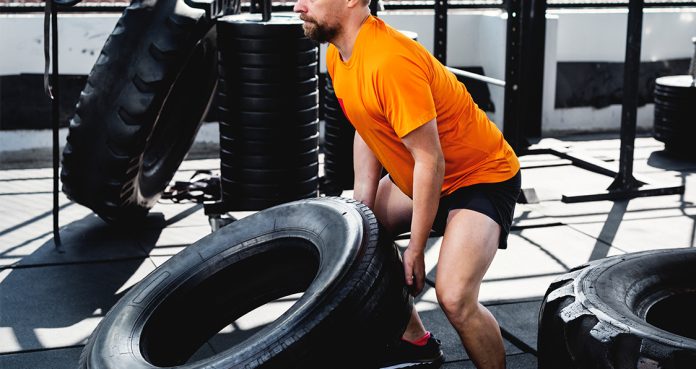
Gym Hacks and Tricks for Bigger and Stronger Muscles
Get Bigger and Stronger With These Gym Hacks
If you’re like most people, you weight train to get stronger and muscular. Sticking to the vanilla training techniques might work in the long run but why stick to the slower path when you can speed up the progress by making a few tweaks in your training?
As you incorporate the hacks in your workouts, you’ll feel an instant effect on your muscles. With the tips mentioned in the article, you can train smarter and make your workouts more effective.
Use Fat Grips
Fat grips can add to the bar width which can make it harder to hold. The difficulty in holding onto the bar recruits your forearms which can spark arm development. Although most people use the fat grip for their arm workouts, you can throw them onto the bar in almost every bar exercise like the bench press, rows, side lateral raises, etc.
A thicker bar can result in an even distribution of pressure throughout your palm which could mean lower stress on joints like the shoulders and elbows. You’ll have no choice but to acknowledge the pump using thicker grips has on your muscles.
Tweak Your Deadlifts
If you’re tall or have longer legs, deadlifting with the orthodox stance might not be the most effective technique for you. While training, you need to remember there is no “one technique fits all”. You need to experiment with the form until you find the one which works the best for you.
A tall person has to bend more as compared to a shorter guy while deadlifting. For people with longer legs, a normal deadlift might feel like what deficit deadlifts are for average height people. Performing sumo squats or using a trap bar is a better alternative for the normal deadlifts for tall people. The two variations of the deadlift are also great for people with lower back problems.
Go Beyond Failure Every Day
Most people misunderstand the concept of “overtraining” and don’t push the boundaries when it comes to training to failure. If a person is overtrained, his nervous system breakdowns, and he’ll have problems recovering from workouts or an illness.
Most people will never be able to reach the “overtrained” state even if they wanted to. While hitting failure in every workout is important, you don’t need to do so in every working set. You can train to failure in the last set of an exercise. So you’ll be hitting failure in five sets if you’re performing five different exercises in a chest workout.
Perform Pin Presses
Pin presses are one of the most effective and yet underutilized training techniques. People with shoulder rotator problem or stiff shoulder blades will have a problem in performing the compound pressing movements like bench press, military presses, etc.
Performing pin presses can reduce the tension on your joints as you can limit the range of motion to your liking. Pin presses can also help you lift heavier weights without the risk of an injury. You can also perform the pin presses on the leg exercises like barbell squats.
When in Doubt, Go Heavy
If you are a weight room regular, chances are that you regularly find yourself in a position where you don’t know how much weight to lift. In such a situation, most people make the mistake of using lighter weights in their first set.
Using weights that are too easy to lift can mean you have wasted your first set. You should always go for the challenging (read intimidating) weight. If you fail to perform the exercise with heavier weights only then you should drop down the weight. In case your first set was too easy, consider the set to be a warm-up and have a go at it again with heavier weights.
Have you ever tried pin presses in your workouts? Let us know in the comments below. Also, be sure to follow Generation Iron on Facebook and Twitter.
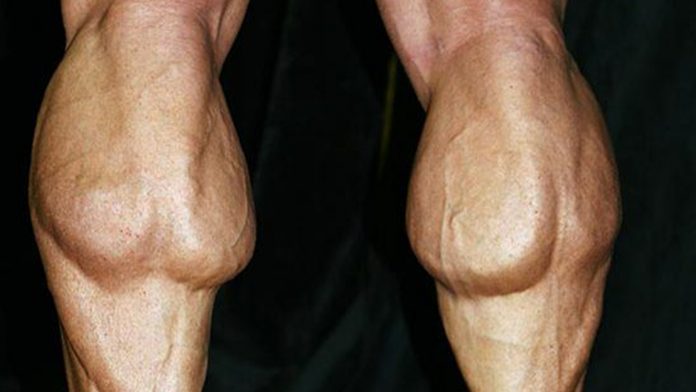
5 Reasons Why Your Calves Aren’t Growing
5 Reasons Why Your Calves Refuse to Grow
Calves can be one of the most stubborn muscle groups. Look around your gym and you’ll probably see a lot of people with skinny legs and even skinnier toothpick calves. Although calves are a small muscle group, they can be one of the hardest to develop.
Building calves can be harder for people with genetically weaker legs. If you’ve hit a plateau and your calves refuse to grow, you need to change your training program. This article will help you takes your calves game to the next level and get you ready for the summer.
1. Treating Your Calves as Accessory Muscles
Most people make the mistake of treating their calves as accessory muscles. They train their calves at the end of their workouts when there is nothing left in the tank. If you have lagging calves, you should be training them at the beginning of your workouts.
Don’t perform a single calf exercise at the end of your workouts. Do 12-15 sets on 3-4 different exercises targeting both your soleus and gastrocnemius muscles. Your calves should be flushed with lactic acid at the end of your workouts.
2. Sticking to the Same Training Routine
You have hit a plateau if your calves have stopped responding to your workouts. Shocking your muscles with new exercises or advanced training techniques like supersets, drop sets, intra-set stretching or blood flow restriction training is a great way to break the plateau.
You don’t need to be in the gym to train your calves and if you’re in the gym, you don’t need to use weights every time. Your own body weight is enough to get the ball rolling. If you don’t have access to calf training equipment at your gym, use an elevated platform to do the calf raises.
3. Not Training Your Calves From Every Angle
Your calves consist of three heads: inner, medial and outer. You need to train all the three heads to ensure an overall development. Switching your feet placement can make all the difference.
Pointing your toes inwards and the balls of your feet outwards will target the outer calves head. Pointing the toes outwards will target the inner head and keeping your feet neutral will work the medial head.
4. Doing Too Little
Calves are a small muscle group and can recover quickly from your workouts. A good rule of thumb to training your calves is to train them every day if they’re not sore. Toothpick calves won’t turn into full-grown bulls by training them once a week.
Three sets of standing calf raise at the end of your leg workouts aren’t good enough to budge the needle on your calf gains. Train your calves as you would train your biceps, and hit 12-15 sets.
5. Overloading
People will small calves usually engage in ego lifting and load the machines with more weights than they can handle. The range of motion is one of the key factors in calf development.
You should maintain a full range of motion and your toes should be pointed like a ballerina at the top of the movement. Establish a mind-muscle connection with your calves and pause and contract them with every repetition.
How often do you train your calves? Let us know in the comments below. Also, be sure to follow Generation Iron on Facebook and Twitter.
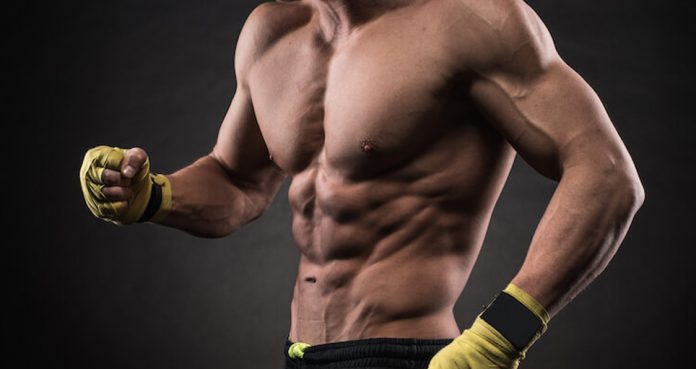
Build Shredded Obliques With This Workout
Get Ripped Obliques with this Workout
A midriff cannot be deemed complete without shredded obliques. Obliques are the fish gill-like muscles present on the side of your abs. Most people are too busy performing crunches and hanging leg raises that they completely forget about training their obliques.
While it is important to have a low body fat percentage to show the obliques, you still need to train them. The obliques need to be trained for both function and show. The oblique family plays a major role in many different movements and are an essential part of the core.
1. Cable Woodchoppers – 3 Sets 15 Reps
Unlike the free weight, cables are incredibly effective in maintaining constant tension on your working muscles. Cable woodchoppers target your obliques and will give you a muscle tearing pump by the end of the exercise.
Attach a D-handlebar to a tower, and move the cable to the highest pulley position. Stand at an arm’s distance from the pulley. With your right side to the cable, grab the bar with both hands. In one motion, pull the handle down and across your body to your front knee while rotating your torso. Repeat with your left side.
2. Decline Bench Oblique Crunches – 3 Sets 20-15-15 Reps
The decline oblique crunches are one of the most underutilized exercises. It’s important to squeeze and contract your obliques while performing these exercises and maintain a full range of motion.
Lie on your left side on a decline bench. Keep your right hand on the back of your head and place your left hand on your right obliques. Touch the bench at the bottom of the movement and your upper body should be perpendicular to the floor at the top of the movement. Repeat on your right side.
3. Side Planks – 3 Sets 1 Minute, 45, 45 Seconds on Each Side
Planks have earned a name for themselves for being a great core builder. Planks exploded onto the scene with the introduction of CrossFit. Side planks are a plank variation which helps in building definition in your obliques.
Start on your side with your feet place one on top of the other and one forearm directly below your shoulder. Raise your hips and contract your core until your body is in a straight line. Don’t let your hips fall down during the working set.
4. Landmines – 3 Sets 15 Reps Each Side
Landmines are a great core builder and your obliques take the most beating in this exercise. If you don’t have the landmine equipment at your gym, you can perform this exercise by placing a barbell in a corner and holding one end of the barbell with both your hands.
Stand with your feet shoulder-width apart while holding the barbell with both hands in front of your face. Keep your elbows locked out while you twist to your right side. Go as far as you can without twisting to your hips. Return to the starting position and repeat for the left side.
5. Russian Twists
Russian twists are one of the most common oblique exercises. Most people make the mistake of going too heavy on this exercise. Use a weight plate or a dumbbell with which you can follow a full controlled range of motion.
Sit with your feet placed flat on the floor and your back at a 60-degree angle. Hold a weight plate over your knees with your arms stretched out. Rotate to your right side and contract your obliques. Return to the starting position and repeat for the left side.
Which is your favorite oblique exercise? Let us know in the comments below. Also, be sure to follow Generation Iron on Facebook, Twitter, and Instagram.
*Header image courtesy of Envato Elements.

Gym Crush – Emily Skye
Image via Instagram @emilyskyefit
Mum to Mia – Emily Skye
Instagram is full of gorgeous fit women. Chances are you might already be following a ton of fitness celebrities on Instagram. It is important you follow people who’re not just pretty but can motivate you to get off your butt and get in shape.
Emily Skype is a bundle of inspiration and beauty who can inspire you to work on your body. Emily is a new mom and is a must follow for women who want to stay fit before, during and after pregnancy.
Picture perfect, isn’t it? We spent a good amount of time trying to find a fault in this picture but failed miserably. Emily is a well-known athlete in the fitness industry and posts uplifting content on her Instagram.
Emily was ranked #3 in Forbe’s list of Top Fitness Influencers in the world. Skye had been lifting weights for the past 7.5 years and was recognized by Forbe’s in 2017. Emily also has a sneaker coming up in 2018 in collaboration with Reebok.
If you’re someone who doesn’t have the time to hit the gym every day, Emily has some workouts you can do at home. Once you follow Skye on Instagram you will have no excuses to miss a workout.
This Australian beauty looks flawless in every shot and does so with total ease. Emily is a transformation expert and helps people lose weight and get the bodies of their dreams by helping them with their diet and training.
Skye’s workouts aren’t limited to glutes and legs. Emily focuses on building a symmetrical physique and her workouts are in-line with this approach. Skye’s workouts are sure to make you break a sweat, so you better get used to it.
Oh, and did we tell you Emily has some famous friends? Skye is a regular in popular Hollywood events and appears on the cover of magazines. The world listens to what Emily Skye has to say.
Emily Skye has documented her pregnancy beautifully. From their pregnancy announcement to the birth of their baby, Emily and her husband have shared the entire journey with their fans.
No woman would mind a transformation like this. Pregnancy can make you stronger, in every way, than you could have ever imagined. You too should document your pregnancy like Emily, and you will thank yourself for it later.
So you say working out with a kid in the house is hard. Why don’t you follow Skye’s lead and make your baby workout with you? The sooner your little one starts working out, the better.
Emily can rock any outfit and this outfit is a proof of it. Skye is from the ‘lifting weights can make a woman look sexier’ club, and we couldn’t agree more. If you’re planning to start your fitness journey or need some motivation to keep going, Emily Skye is a must follow.
Who is your gym crush? Let us know in the comments below. Also, be sure to follow Generation Iron on Facebook and Twitter.
*Header image courtesy of Instagram

3 Ways to Feel Your Back
3 Ways to Feel Your Back
Back training is plagued with people not actually training their back. Sounds counter intuitive, I know. Rows, pulldowns, and pull ups are supposed to grow giant backs, but if you feel nothing but your arms, that’s a problem.
Many people would tell you to simply think about your back more, but this is pointless or even counterintuitive advice. You want your natural mechanics to stimulate your back, not being forced to think about a muscle you can’t even see every set.
Mind muscle connection research shows that this can reduce the load performance as well. So here are 3 better ways to feel your back and thus start growing it like a champ.
Fix Your Pulling Mechanics
Your arms inevitably have to be involved in many common back exercises. They’re supposed to experience some growth during rows, pull ups, and pulldowns. That’s not the issue, so the goal isn’t less arms, but more back.
Here’s how:
Pull with your elbows. Whether it’s a horizontal movement like a row or a vertical movement like a pulldown, your intent is to pull with your elbows not your hand. Your elbow is the main lever that’s closer to your back and will help shorten that muscle. Your hand is simply a secure hook to attach load so the lever has resistance. Your hand is essentially a necessary evil to increase force production which is fine as long as you pull with your elbow. For rows, think about initiating with your elbow and driving it back. For pull ups (and pulldowns), think about driving your elbows towards your hips. Doing this alone may even improve your pull up technique and increase the range of motion.
Don’t lock your scaps. I don’t know how this advice has infected our industry for so long, but pulling exercises are the last exercises you want to lockdown your shoulder blades. Your shoulder blades are a cornerstone to pulling mechanics and help contract key back muscles. If you lock those down, you lose their force output which forces the arms to do more work. There’s literally no benefit to locking down your scaps no matter what people regurgitate about the stability benefits. Let the scaps move naturally and roam free.
Reach and arch with your pull. Training through a full range motion increases the stretch and shortening of a muscle. This allows mechanical tension to be applied more across a muscle’s length. With back training, many people miss out on this. The back can continue to stretch as you reach further with your rows and pulldowns. This causes some back rounding which is ok. For pullups, you stretch further by sinking your body down and letting your shoulders and scaps rise as high as they can at the bottom of the rep. On the opposite end of the spectrum, you get the muscle further shortened by arching at the end of a row/pulldown or at the top of a pull up.
Use Straps
The mantra that straps are for wimps will be internalized at your detriment. Many people think harder is better. Sure lifting strapless is harder, but it makes it harder for your forearms not to mention compromising the load your back can handle.
This is problematic because your mechanics might be good, but you may not be feeling your back simply because it’s not forced to do any work.
To recruit more muscle fibers especially those valuable fast twitch fibers, you have to push towards failure. In this context, I’m not talking about merely failing the movement, but I’m talking about the specific muscle giving out.
During an upper body day, your forearms are used in everything from curls, presses, and lateral raises. Add in your back work and your forearms are exhausted. You might fail the movement thinking your back is trained, but really your forearms let you down and can no longer manage the load.
While this happens, your back is kicking back drinking a margarita because it barely had to work.
So straps allow lifters to rest their forearms thus allowing the stress to funnel towards those back muscles. This will get you not only feeling your back, but allow you to push towards failure to get some serious growth going.
Oh, and if straps are uncomfortable, try versa grip or any sort of grip assist. The same principle applies.
Go Lighter
The back just like any other muscle. It can grow from a variety of rep ranges, but certain exercises don’t lend themselves great to heavy loading, especially for the goal of hypertrophy.
Ever do a really heavy sumo deadlift, barbell bench press, or bent over barbell row? Yeah these exercises feel hard, but doing them heavy simply feels hard overall, not on the local muscle.
Heavier loads apply more force on other structures like your joints and connective tissues. This requires more stabilization from your core and other muscles. Any deviation in form is met with more stabilization because of the high load.
In the case of a barbell row, your hamstrings, low back, and core are stabilizing the load. Even if you use straps, a heavy row under 5 reps won’t get your back that pumped feeling you desire.
So while heavy is cool when your gym crush walks by, it’s not always conducive towards your goals.
To feel your back, it’s important to go lighter. I’m talking 8-12 or even 12-20 rep range. Tell me by the time you reach a 20-rep failure set that you don’t feel your back more. It’ll be lit like a Christmas tree. Ok, not the best metaphor, but you get the idea.
Don’t Overthink Back Training
Literally speaking, don’t overthink feeling your back. It’s not necessarily a brain thing. It’s a matter of environment. Set up your execution properly, use straps to aid those limiting forearms, and provide an appropriate load (lighter load).
Do the following and you’ll feel your back without even trying. That should be the goal of good back training.
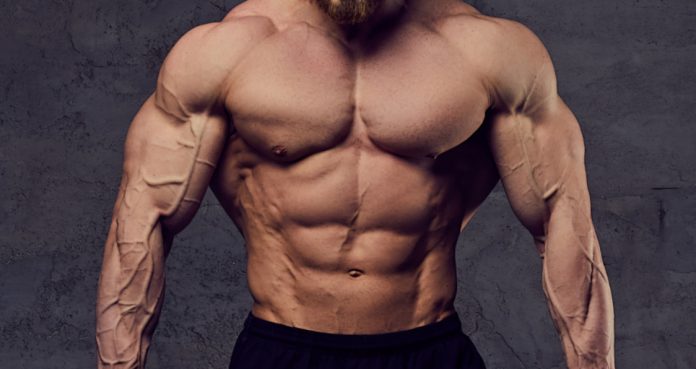
One Trick To Take Your Gains To The Next Level
Use this trick to boost your gains.
Of all the people who join a gym, only a few reach their goals. Not achieving the desired results even after working hard can be frustrating. Most people quit working out because they can see no changes in their bodies.
Crafting a Greek god-like physique isn’t easy, but you could eliminate a lot of the pain and trouble with a single trick. Sticking to this trick separates the gym novices from the pros.
Follow a Schedule
Sticking to a schedule can help you take your gains to the next level. A schedule is a much broader concept as opposed to how some people think about it. Following a schedule is easier said than done.
Most people don’t have the discipline of sticking to a routine. Bodybuilding is a sport which requires dedication, consistency, and discipline. Lacking on a single one of these attributes can cause failure to achieve your desired results.
Workout
You should follow a schedule when it comes to working out. You should reach and leave the gym at the same time every day. Doing this helps with building muscles as your muscles subconsciously get ready for your workouts.
You also need to time your workouts. Your workouts should be short and intense. You need to get the most bang for your buck. If you follow a HIIT workout, you should be spending around 45-60 minutes in the gym, not more than this.
Eat
You can’t transform your body without adjusting your diet. If your goal is to build muscle mass, you need to amp up your protein intake. Design a nutrition plan with the amount of macro and micronutrients required every day.
The time of your meals also makes a big difference. Instead of eating three big meals, you should eat 6-8 small meals. Eating at regular intervals keeps your metabolism rate high and will help you in burning fat to produce energy.
Sleep
No matter how hard you workout in the gym or how good your diet is, you won’t see the results until your body is properly rested. You break muscle while you’re working out. These muscles repair, get bigger and stronger while you’re not in the gym.
You need at least 6-8 hours of sleep every night to build muscle mass. You should also go to bed and wake up at the same time every day. Following a sleeping routine will help you fall asleep faster and will reduce the chances of insomnia.
Cheat
This might sound counterintuitive since we’re talking about following a schedule, but you’re allowed to cheat once a week. Unfortunately, the cheating is limited to a single cheat meal. A cheat meal is important as it provides your body with an influx of carbs and fats which your body needs to process.
Your body has to work harder than usual to digest these cheat meals. Although, if you’re getting ready for a competition or a special day, you would want to avoid the cheat meals. Make sure you cheat on a schedule.
What is your favorite cheat meal? Let us know in the comments below. Also, be sure to follow Generation Iron on Facebook and Twitter.
